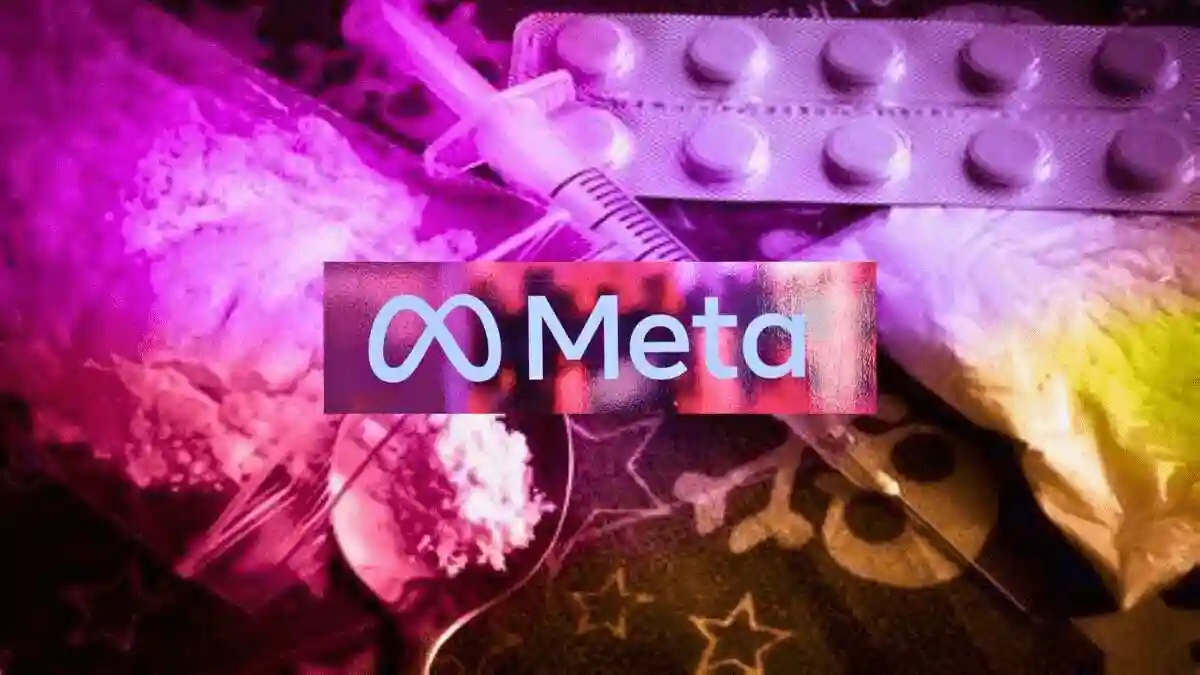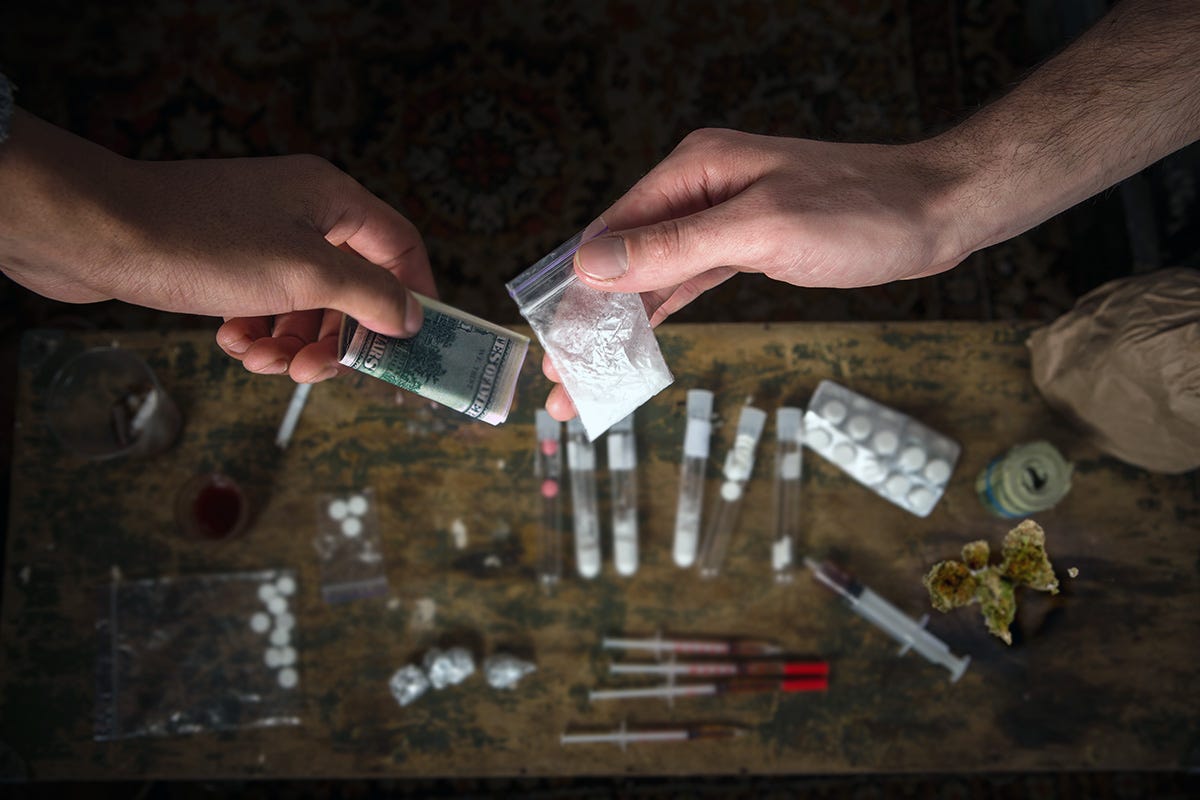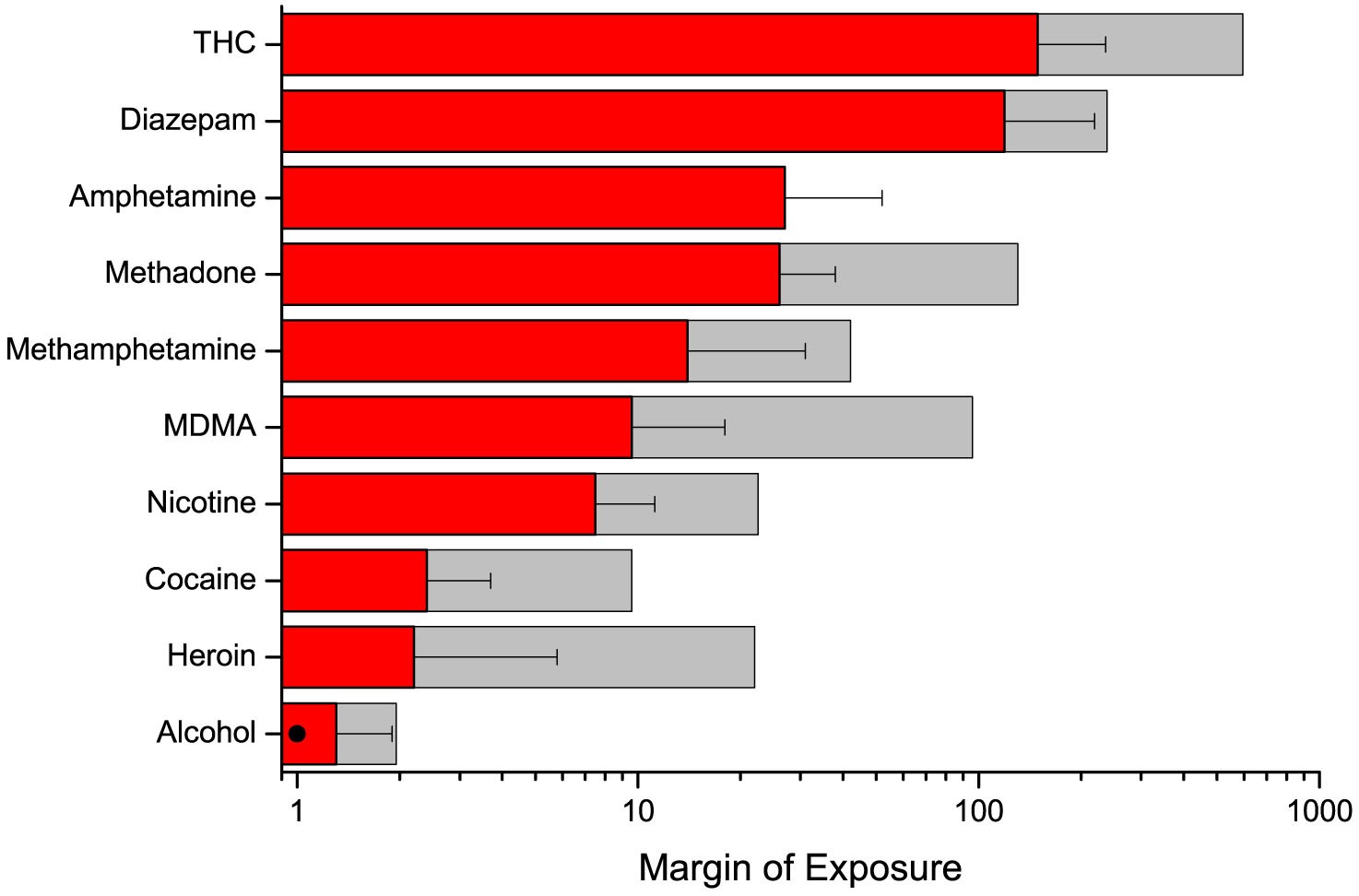Meta’s Alleged Role In Illicit Drug Sales Sparks Legal Scrutiny; The Looming Crisis, United States Battle Against Opioids
Recent reports indicate that US prosecutors in Virginia are investigating whether Meta, Facebook's parent company, might have been involved in facilitating illegal drug sales through its social media platforms. The United States is grappling with an unparalleled opioid epidemic, with fentanyl emerging as a central adversary in this complicated crisis. However, this is not the only point of contention that has emerged - widespread human trafficking and child sexual exploitation on Facebook and Instagram are also spotlighted. The proliferation of opioids presents a formidable challenge for the country with devastating consequences for public health, the economy, and national security, even as it steps up to combat the growing crises. Back in India, it can be safely said that there are dubious accounts that are on the rise on Facebook, promoting wife-swapping, solicitation and much more.

Meta is under the lens of the US authorities in Virginia, who are currently investigating whether Meta, the parent company of Facebook, may have played a role in facilitating and profiting from the illegal sale of drugs through its social media platforms, as reported by The Wall Street Journal.
According to sources familiar with the matter and documents cited in the article published, prosecutors issued subpoenas last year and have been conducting inquiries as part of a criminal grand jury investigation.
The report indicates that prosecutors have been seeking records related to drug-related content or the illicit sale of drugs through Meta’s platforms, with assistance from the Food and Drug Administration (FDA).
However, presenting their defence, a Meta spokesperson informed The Wall Street Journal that the sale of illicit drugs goes against their policies, and they actively work to detect and remove such content from their services.
The spokesperson added that Meta cooperates with law enforcement authorities to combat the sale and distribution of illicit drugs.
Nick Clegg, Meta’s president of global affairs, mentioned on the social media platform X that Meta has collaborated with various entities including the US Department of State, the United Nations Office on Drugs and Crime, and Snapchat to disrupt the online sale of synthetic drugs and educate users about associated risks, addressing the opioid epidemic as a significant public health concern.
It should be noted that this isn’t the first instance where Meta’s parent company has faced legal challenges in the US.
Last year, a lawsuit was filed in Delaware by several investment funds alleging that Meta’s directors and senior executives were aware of widespread human trafficking and child sexual exploitation on Facebook and Instagram but failed to address it.
In response, Meta’s lawyer David Ross argued for the dismissal of the lawsuit, stating that the alleged conduct of the company’s leaders did not cause “corporate trauma” as required by Delaware law. The company contends that the claims in the lawsuit are speculative regarding potential future harm or loss.
A spokesperson for Meta, Andy Stone, emphasized that the company has been actively combatting such abuses both on and off its platforms for over a decade, supporting law enforcement efforts to apprehend and prosecute those responsible.

The Looming Crisis, America’s Battle Against Opioids
The United States is in the throes of an unprecedented opioid epidemic, a crisis that transcends public health concerns and permeates into the areas of economy, national security, and foreign policy.
At the heart of this crisis lies fentanyl, a potent synthetic opioid, presenting a formidable challenge to policymakers and law enforcement agencies.
With over 1,500 Americans succumbing to opioid-related overdoses each week, the magnitude of the crisis cannot be overstated.
This staggering death toll stresses the urgency of addressing the proliferation of fentanyl and other opioids, predominantly originating from illicit sources in China and Mexico.

The Beginning
The roots of the opioid epidemic trace back to the 1990s, characterized by the overprescription of opioid medications for pain management.
However, the crisis has since morphed into a multifaceted menace, fueled by the influx of inexpensive heroin and synthetic opioids flooding the streets, courtesy of foreign drug cartels.
To comprehend the gravity of the situation, it’s essential to dissect the various drugs contributing to the crisis.
Opioids include both legally manufactured medications like oxycodone and fentanyl, prescribed for pain management, and illicit narcotics such as heroin, leading to a crisis that has unfolded in distinct waves, each deepening the devastation.
The initial wave witnessed a surge in overdoses attributed to prescription opioids like Percocet and Oxycontin. This was followed by a resurgence of illegal heroin, marking the second wave of the crisis.
Most alarmingly, the proliferation of synthetic opioids, particularly fentanyl, has propelled a sharp escalation in overdose fatalities since the early 2010s.
While fentanyl once served a legitimate medical purpose as an anesthetic, its illicit production and distribution have transformed it into a grave public health hazard.
Anne Milgram, the head of the U.S. Drug Enforcement Administration (DEA), aptly characterized fentanyl as the “single deadliest drug threat” confronting the nation.

The Deadly Newer Drugs
New permutations of synthetic opioids continue to emerge, adding layers of complexity to the crisis.
Xylazine, a potent compound utilized in horse tranquilizers, along with other innovative opioids, are reported to possess significantly higher potency compared to pure fentanyl.
Assessing the magnitude of the epidemic reveals a harrowing reality.
Overdoses linked to synthetic opioids, chiefly fentanyl, stand as the primary cause of death among individuals aged eighteen to forty-five in the United States.
In 2021, the death toll surged to a staggering 80,411, exceeding ten times the number of U.S. military service members lost in the post-9/11 conflicts in Iraq and Afghanistan.
A study conducted by researchers at the Mayo Clinic and Yale University uncovered that fatalities solely attributed to fentanyl nearly tripled from 2016 to 2021.

The Lockdown
The COVID-19 pandemic worsened the opioid crisis on multiple fronts, as supply chain disruptions compelled individuals to resort to unfamiliar drugs, while social distancing measures prompted more people to consume drugs in solitary settings, thus heightening the risk of fatal overdoses, analysts suggest.
In tandem with the pandemic, the proliferation of illicit fentanyl, often camouflaged by drug cartels to resemble legal prescription opioids, has intensified the crisis.
In 2022, the Drug Enforcement Administration (DEA) confiscated over fifty million counterfeit prescription pills laced with fentanyl, surpassing the previous year’s seizure figures by more than double.
Alarmingly, more than half of these counterfeit pills contained potentially lethal doses of fentanyl, according to the DEA.
Fentanyl’s unparalleled potency aggravates its addictive and lethal nature, deepening the crisis further. Merely two milligrams of the drug constitute a lethal dose—an amount roughly equivalent to ten to fifteen grains of table salt.

Who Are Affected
Examining the demographics impacted by the opioid crisis shows its broad reach.
Fentanyl emerges as the leading cause of drug overdose deaths across all regions of the United States and among all age, racial, and ethnic groups in 2021.
However, certain demographics experience disproportionate impacts—American Indian and Alaska Native individuals, Black individuals, younger adults, and men face higher rates of fatal fentanyl-linked overdoses.
A disconcerting trend is the escalation of fentanyl-related deaths among youths aged ten to nineteen. Fatal overdoses attributed to fentanyl nearly doubled among teens from 2019 to 2021. Experts attribute a portion of this surge to the ease of procuring counterfeit pills via social media platforms.

Economic Consequences
According to numerous reports, the opioid epidemic is inflicting substantial economic damage on the United States.
A particularly striking estimate, put forth by the U.S. Congress Joint Economic Committee (JEC), indicates that the opioid crisis incurred a cost of nearly $1.5 trillion in 2020, equivalent to 7 percent of the gross domestic product (GDP) for that year.
This figure represents a one-third increase from the last assessment conducted in 2017, with the JEC forecasting a continued rise in costs due to escalating fatal overdoses.
The economic toll includes expenses associated with healthcare for overdose treatment, combating fentanyl trafficking, law enforcement efforts, lost workforce productivity, and the human cost of lives lost to overdoses and the diminished value of life for survivors.

Source of Heroin and Fentanyl
Most of the fentanyl entering the United States is smuggled across the border with Mexico, according to U.S. officials.
Smugglers transport it in vehicles or with pedestrians, who can carry small, easily concealable amounts due to its high potency compared to other illegal narcotics.
The median seized weight stands at just 1.2 kilograms (2.6 pounds), containing over fifty thousand lethal doses. By December 2023, authorities had intercepted at least 12,245 kilograms (27,000 pounds) at the southern U.S. border that year.
While China was previously the primary source of fentanyl entering the United States, its flow has significantly decreased since the ban on all fentanyl variants’ production in 2019.
Nonetheless, China remains the principal manufacturer of fentanyl precursor chemicals. The majority of fentanyl smuggled from Mexico into the United States is produced using chemicals sourced from China.

Combatting the Opioid Crisis
The United States government has collaborated with various countries, particularly Mexico, for decades to curb the influx of illegal narcotics.
Through initiatives like the Mérida Initiative, the United States provided Mexico with approximately $3.5 billion in security and counternarcotics aid between 2008 and 2021, which included funding for military aircraft and surveillance technology.
Despite resistance from the Mexican government under President Andrés Manuel López Obrador, citing non-production of fentanyl, the surge in fentanyl-related deaths has prompted concerns in Washington, leading to calls for a significant shift in U.S. drug policy.
President Joe Biden has prioritized addressing the fentanyl crisis both domestically and in foreign policy.
However, despite these efforts, the death toll from fentanyl overdoses has continued to rise during his tenure.
In late 2021, Biden declared synthetic-opioid trafficking a national emergency and signed executive orders authorizing sanctions against individuals and entities involved in fentanyl production and dissemination.
Subsequently, in late 2023, the U.S. government imposed sanctions on twenty-five China-based firms and individuals associated with fentanyl precursor chemical production.
Moreover, China was designated as a major illicit drug-producing and drug-transit country, alongside twenty-two others, including Colombia, India, and Mexico.
Simultaneously, the Biden administration is striving to mitigate the illicit distribution of opioids within the country.
Federal regulators have implemented new restrictions on opioid prescriptions and heightened efforts to seize fentanyl while enhancing public awareness regarding the drug’s deadly nature.
In 2022, the DEA confiscated twice the quantity of fentanyl compared to the previous year and issued a public warning about counterfeit prescription medications containing fentanyl—six out of every ten counterfeit pills contain a lethal dosage of the substance.
To mitigate the drug’s detrimental effects, in March 2023, the Food and Drug Administration (FDA) granted approval for Narcan, a naloxone nasal spray, as the first over-the-counter medication for reversing fentanyl overdoses.
The availability of Narcan for public purchase, which commenced in numerous chain pharmacies in September, is viewed by experts as a significant advancement in combating the epidemic.
Nonetheless, it is not considered a universal remedy due to challenges related to cost and accessibility.
:format(webp)/cdn.vox-cdn.com/uploads/chorus_asset/file/23951355/STK043_VRG_Illo_N_Barclay_1_Meta.jpg)
The Last Bit, the investigation into Meta’s potential role in facilitating illicit drug sales, along with the broader scrutiny of other social media platforms, shows the multifaceted challenges posed by the digital landscape in combating drug trafficking.
The emergence of online platforms as avenues for drug transactions indicates the need for comprehensive regulatory frameworks and enhanced cooperation between law enforcement agencies, technology companies, and international partners.
As authorities investigate deeper into these issues, addressing the systemic vulnerabilities that allow such activities to increase becomes imperative – the repercussions of illicit drug sales via social media platforms extend beyond public health concerns to include legal, economic, and societal impacts.



